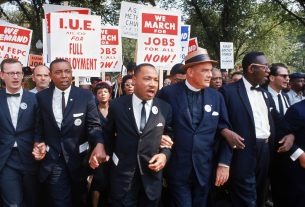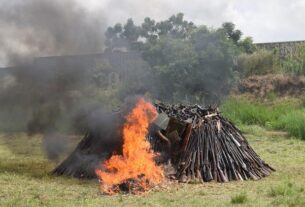|
Getting your Trinity Audio player ready...
|
“War is hell,” said American Civil War general William Tecumseh Sherman in a statement that doesn’t even come close to what Israel experienced on October 7, 2023.
Unfortunately, war and weaponry have been a tragic fact of life (and death) since the dawn of human “civilization.” In that vein, let’s take a look at some of the terms and tactics that have evolved over the millennia and trace their origins.
The word “war” is derived from the Frankish-German word werra, meaning “confusion, discord, or strife.” The ensuing French variation of the word for “war” is guerre, hence the term “guerrilla warfare.”
The phrase nom de guerre (“war name”) denotes a moniker chosen by someone to use when he or she is involved in a particular activity, especially fighting in a war. For example, Pol Pot was not the real name of Saloth Sar but a nom de guerre that the Cambodian dictator adopted in the 1970s. Pol Pot means “original Cambodian.”
Names of weapons derived from people who devised them
Over the centuries of warfare, many weapons have derived their names from the people who devised them.
A derringer is a small handgun. The original Philadelphia Deringer was a muzzle-loading caplock single-shot pistol introduced in 1825 by American gunsmith Henry Deringer. It was this pocket pistol that John Wilkes Booth used to assassinate Abraham Lincoln. The term “derringer” became a generic misspelling in the reporting of the assassination.
The Tommy gun is a blowback-operated, selective-fire submachine gun invented in 1918 by US army brigadier-general John T. Thompson. It was designed to break the stalemate of trench warfare of WW I, but early models didn’t arrive in time for combat. The gun’s later popularity among Irish-American and Italian-American gangsters in the 1920s and 1930s is what led Congress to pass the National Firearms Act.
A Molotov cocktail is a hand-thrown incendiary weapon constructed from a fragile container filled with flammable substances equipped with a fuse. In use, the fuse attached to the container is lit and the weapon is thrown, shattering on impact. The device is named for Vyacheslav Mikhaylovich Molotov, the foreign minister of the Soviet Union during and after WWII. In 1939, he authorized the illegal Soviet invasion of Finland during the early days of the war, thus igniting the Russo-Finnish War. Skilled in propaganda, Molotov referred to the cluster bombs dropped by the Soviets on Finland as “food parcels” for starving Finns. Finnish fighters extensively used incendiary weapons made from bottles filled with a mixture of tar, ethanol, and gasoline, stoppered with wicks. In a turn on black humor, they named them “Molotov cocktails” – drinks intended to accompany Molotov’s “food parcels.”
The Uzi submachine gun is a compact automatic weapon that is used worldwide as a police and special-forces firearm. The gun is named for its designer, major Uziel Gal, an Israeli army officer who developed the weapon after the Arab-Israeli war of 1948. It was phased out by the IDF in 2003.
The Sten gun was a British submachine gun manufactured in a number of variants (know as Marks, or Mks) which was used extensively by British and Commonwealth forces in WW II. The name is an acronym of the weapon’s chief designers, major Reginald V. Shepherd and Harold J. Turpin, and “En” for the Enfield factory. A copy of the British Mk 2 Sten machine-carbine was made by the Palmach in the course of the struggle to establish a Jewish state in Palestine.
Kalashnikov rifles, or AK rifles, are a group of assault rifles based on the design of Mikhail Kalashnikov. Vladimir Alexandrovich Kucherenko, better known by his pen name Maxim Kalashnikov, was a Soviet lieutenant general, inventor, military engineer, writer, and small arms designer. In 1949, the AK became the standard issue assault rifle of the Soviet army.
On a much larger scale, the American M4 Sherman tank is one of the most famous tanks in history. Designed in 1940 by the United States Army Ordnance Department, the M4s were used by the US forces from 1942 to 1955. It became the most widely used tank by the Western Allies during WW II. Its fame was due to its many inherent qualities and the large numbers that were produced. After the war, the Sherman tank continued to be used for several decades. The tank was named after American Civil War commander William Tecumseh Sherman.
Dressed for success on the battlefield, so to speak, military uniforms are standardized garb worn by members of the armed forces and paramilitaries of various nations. Uniforms became the norm with the adoption of regimental systems, initially by the French army in the mid-17th century. Uniforms have gone through significant changes over the centuries, from colorful and elaborate, ornamented clothing until the 19th century, to utilitarian camouflage uniforms for field and battle purposes from WW I on.
An interesting feature of the French army uniforms were the brass buttons on the sleeves. The buttons were established by Napoleon Bonaparte to deter soldiers from wiping their mouths and noses on their sleeves and to encourage them to use handkerchiefs.
Why was Napoleon always depicted with one hand slipped into his shirt? According to sources, concealing a hand in one’s coat signifies gentlemanly restraint and was often associated with nobility. The custom dates back to ancient Greece, when orator Aeschines claimed that restricting the movement of one’s hand was the proper way to speak in public.
And speaking of jackets, the term “turncoat” refers to a person who deserts one party or cause in order to join an opposing one. A turncoat is essentially a traitor. The term stems from the practice of wearing a badge or pin on one’s coat signifying the party or leader one supported. By “turning their coat,” the traitors hid their allegiance to others.
War became a theme for art, literature, film
As war has played such a significant part of human history, it is a theme that figures largely in the realms of art, literature, and film.
In the art world, Guernica is a large oil on canvas painted by Spanish artist Pablo Picasso in1937. It is one of his best-known works, regarded by many art critics as the most moving and powerful anti-war painting in history. It is exhibited in the Museo Reina Sofía in Madrid. The black-and-white painting is based on the events of April 27, 1937, when Hitler’s air force, acting in support of general Francisco Franco during the Spanish Civil War, bombed Guernica, a Basque town of no strategic military value. It was history’s first aerial saturation bombing of a civilian population. Picasso completed the enormous artwork, which measures 11.5 × 25.5 feet (3.49 × 7.77 meters), in three weeks.
In the literary arena, War and Peace is a historical novel by Russian writer Leo Tolstoy, regarded as one of the greatest authors of all time. Set during the Napoleonic wars, the book combines fictional narrative with chapters discussing history and philosophy. First published serially beginning in 1865, the work was rewritten and published in its entirety in 1869. The 1,225-page tome is an internationally praised classic of world literature.
Gone with the Wind is a novel by American writer Margaret Mitchell, first published in 1936. The story is set in Georgia during the American Civil War and Reconstruction Era. Popular with American readers from the outset, the book was the top American fiction bestseller in 1936 and 1937. In 1937, Mitchell received the Pulitzer Prize for Best Fiction. In 2014, a poll found it to be the second-favorite book of American readers, just behind the Bible. More than 30 million copies have been printed worldwide.
The book was adapted into the 1939 film, which is considered to be one of the greatest movies ever made. Gone with the Wind won the award for Best Picture at the 12th Annual Academy Awards. The classic line “Frankly, my dear, I don’t give a damn” was voted #1 in the American Film Institute’s 100 Movie Quotes poll. The line is spoken by Rhett Butler (Clark Gable) as his last words to Scarlett O’Hara (Vivien Leigh) in response to her tearful questions “Where shall I go? What shall I do?”
Another two films that are considered war classics are Francis Ford Coppola’s 1979 epic Apocalypse Now about the Viet Nam War; and Steven Spielberg’s gripping 1993 Schindler’s List about the Holocaust.
As for the future, we eagerly await the fulfillment of the words of the prophet Isaiah: “He shall judge between the nations and shall decide disputes for many peoples; and they shall beat their swords into plowshares, and their spears into pruning hooks; nation shall not lift up sword against nation, neither shall they learn war anymore” (Isaiah 2:4).
Amen to that. ■


